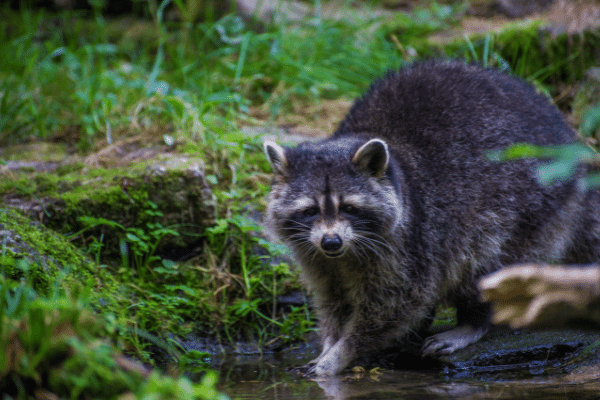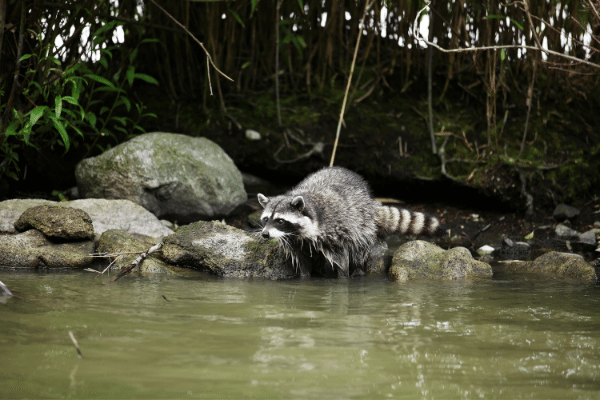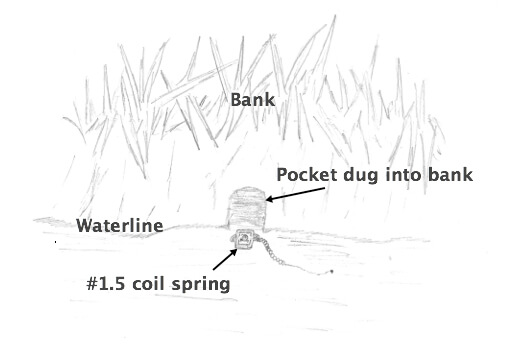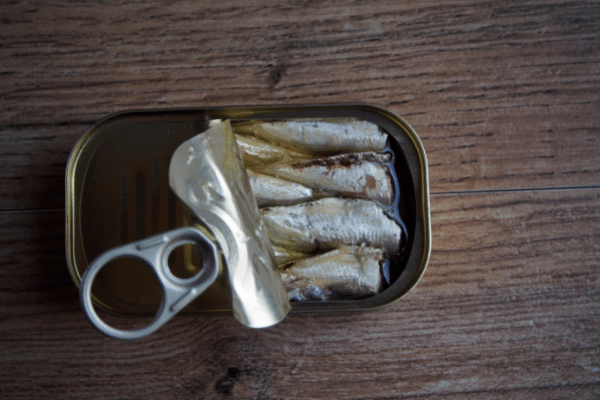- Home
- Raccoon Trapping
- Water Trapping Raccoons
Water Trapping Raccoons
This post may contain affiliate links so I earn a commission.
Water trapping raccoons using a pocket set is probably the easiest and most effective way to trap a raccoon along a stream or river.
The set is quick and easy to make, plus you have the ability to catch additional furbearers like mink and muskrats who also find the set irresistible.
Raccoons are not trap shy animals.
In fact, a lot of trappers actually spend too much time looking for the perfect location to make a raccoon set.
Instead of building elaborate sets in the "perfect spot" just keep an open mind and look for an area where you see raccoon sign.

Usually you can easily spot raccoon tracks in the soft mud along a riverbank, scat on top of a rock or log, or you can see trails leading to and from the waters edge.
These are all great indications that you're in the right spot.
The only thing left to do now is make a pocket set with a #1.5 coil spring and a curious raccoon will take care of the rest.
Water Trapping Raccoons Using A Pocket Set
The pocket set works best along a river, stream or ditch bank that has vertical or steep banks along the waters edge.
Raccoons are very curious animals with an excellent sense of smell.
As long as you're in the right area and make a good pocket set you'll be successful not only for raccoons but also for mink and muskrats.

Once you've located an area that has raccoon sign, look for a spot where the bank rises up a couple of feet from the waters edge and it has a little grass or sticks along the top of the bank.
Don't worry if you don't see raccoon tracks directly in front of your set location.
Using a small trowel, dig a hole straight into the bank right at the waterline.
The hole or "pocket" should be about a foot deep and about 5-8 inches wide.
Next, take a #1.5 coil spring trap and set it in the water in front of the pocket.
You can offset the trap about 2''-3'' to the left or right of the pocket if you want, or you can simply put it right in front.
Ideally the trap should be under about an inch or two of water.
Secure the trap to a stake or tree using 11 gauge wire or cable with 2 swivels which will allow the trap to rotate freely.
Raccoons are notorious for fighting the trap after they've been caught.
They will chew and destroy anything they can reach.
To prevent them from crimping and busting the wire, remove any large logs or roots the raccoon can get tangled up in after being caught.
If the water is deep enough you can secure the trap to a drowning wire, but it's usually not necessary.

There are two schools of thought when keeping a trapped raccoon calm.
First, you can give the raccoon enough wire to reach dry land.
Once on land the raccoon will calm down and won't try to chew its foot from the trap.
The second school of thought is to stake the trap in deeper water to prevent the raccoon from lifting the trap above the surface.
Since a raccoon won't typically stick its head underwater it's less likely to chew.
Overall, I like to give enough wire to allow the raccoon to rest on dry land.
Once comfortable, they will calm down and won't fight the trap.
Water Trapping Raccoons - Bait Choices
There's a lot of different baits that will work in the pocket set when you're water trapping raccoons.
Raccoons are not picky eaters.
Shrimp, canned sardines or mackerel, fish oil or a good lure applied to a ball of grass will all work.

Simply shove the bait into the back of the pocket and you're done!
You can also apply a little bit of lure right above the pocket and splash a little bit of water on it.
This will wash some of scent around the area helping to spread the scent and draw in a hungry raccoon.
Overall - Water Trapping Raccoons
Water Trapping raccoons using a pocket set is one of the most productive sets you can use.
They're quick and easy to make, plus mink and muskrats find them irresistible!



